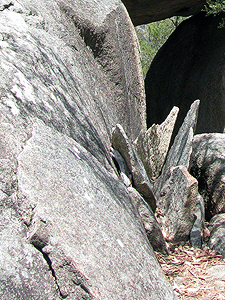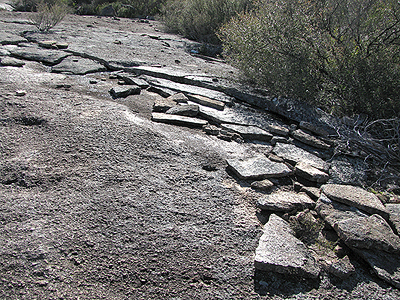(Physical: Heat and Chemical)
Granite, as it weathers above ground, cracks and sloughs thin flakes from its exposed surface. This process is known as "exfoliation" or "onion-skin weathering". During the day, the granite heats up and expands. At night, it cools and shrinks. This causes stress to the outer layers of the stone. Water and air penetrate any cracks and assist the weathering process by chemically decomposing the minerals of the rock. Eventually, the outer section of the granite simply peels away. Extreme heat from bushfires may also cause rocks to expand and shed an outer layer. Examples of exfoliation can be found at the Granite Arch and Castle Rock. It is a common sight on the surfaces of flat slabs and domes.
More Photos...
Next...
Freeze-thaw – The power of ice.
|

Exfoliation on a boulder
at Granite Arch.
|
|

Example of exfoliation on a granite pavement,
the lower slopes of Mt Norman.
|

